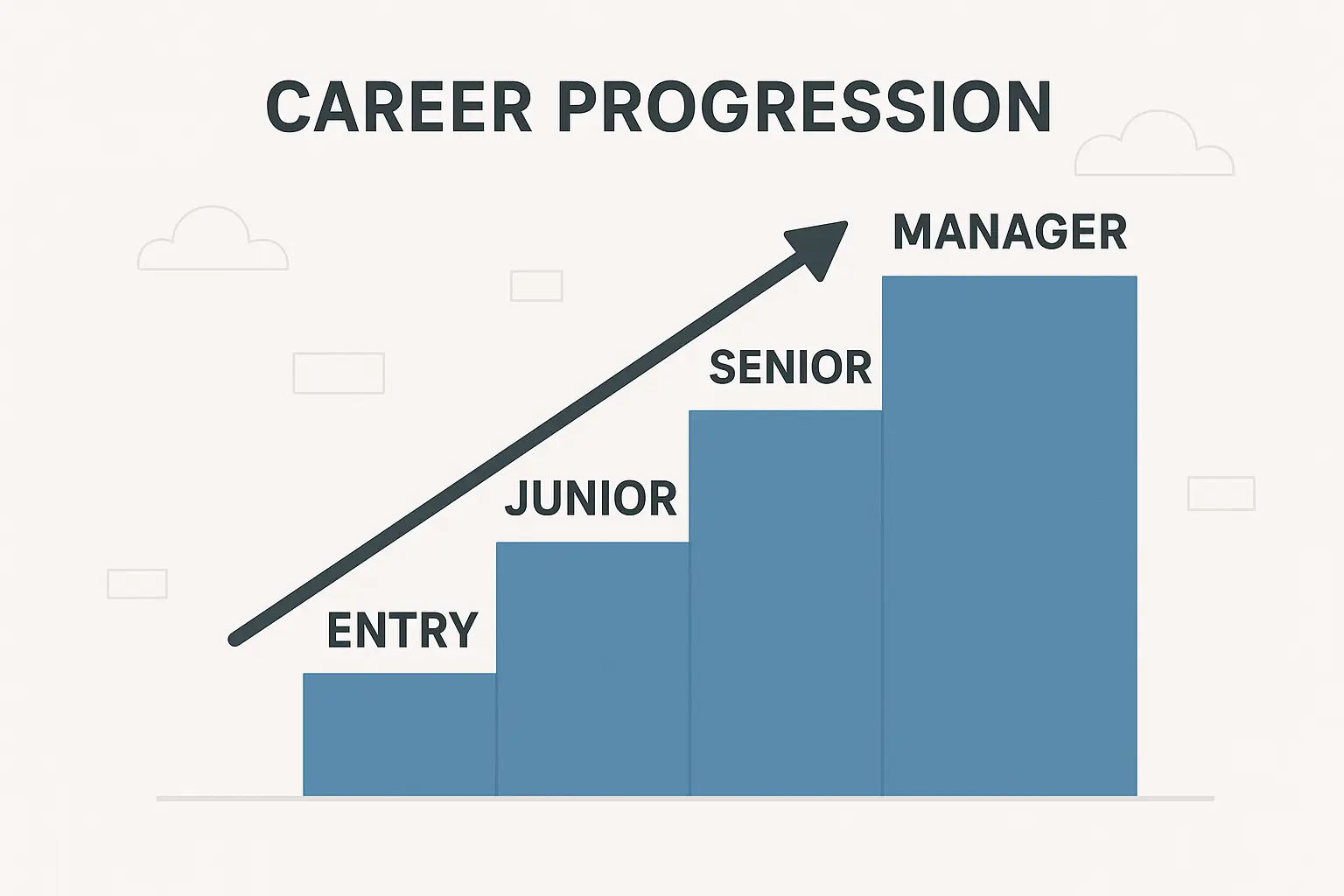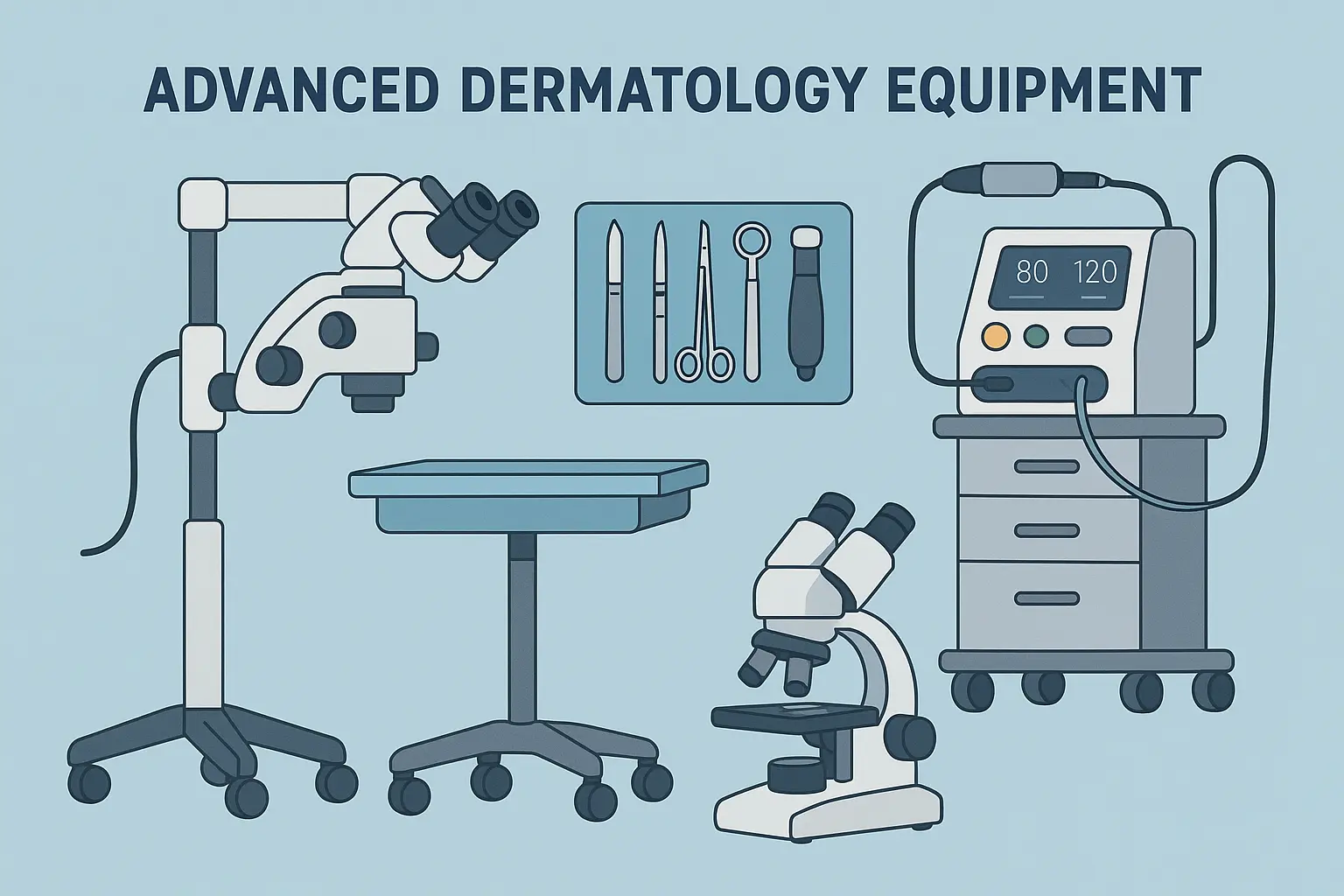Look, I wish someone had been real with me about dermatology technician salary when I started. The numbers you see online? They’re often misleading or way too general to be helpful.
Here’s what actually matters: where you live and where you work make or break your paycheck. I started at $32,000 in a small town clinic. My friend Sarah started the same month at $48,000 in Denver doing the exact same job. That stung, but it taught me everything I needed to know about this field’s earning potential.
The dermatology technician field has experienced remarkable growth, with salaries typically ranging from $35,000 to $50,000 according to recent industry data. But that’s just the starting point – I’ve seen techs earn well into the $70,000+ range with the right strategy.
Table of Contents
- Current Market Reality for Dermatology Tech Pay
- Certification Requirements and Their Real Impact on Your Paycheck
- Career Advancement Strategies That Actually Work
- Negotiation Tactics and Compensation Secrets
TL;DR
- Geographic location dramatically affects your earning potential – metropolitan areas can pay 20-30% more than national averages
- Professional certification can boost your dermatology technician salary by 15-25% and opens doors to specialized, higher-paying roles
- Private practices typically offer the highest base salaries, while hospitals provide better benefits packages
- Entry-level positions start around $35,000-$45,000, with experienced techs earning $60,000-$75,000+
- Specializing in areas like Mohs surgery or cosmetic dermatology can increase earnings by 20-30%
- Total compensation includes benefits worth 20-40% of your base salary – don’t overlook this during negotiations
Current Market Reality for Dermatology Tech Pay
Understanding professional certification requirements is crucial because they directly impact your earning potential. But let me be straight with you – this field pays pretty well, but there’s a huge catch most people don’t warn you about. Your paycheck depends way more on WHERE you work and WHAT certifications you have than just showing up and doing the job.
According to recent data from Look for Zebras, entry-level positions may start at approximately $30,000, while experienced technicians in high-demand areas can earn upwards of $70,000. But those are just numbers on paper – let me tell you what really happens.
When I started out, I had no idea that moving just two states over could bump my dermatology technician salary up by $8,000 annually. I remember being shocked when a colleague told me she was making $15,000 more than me for doing essentially the same job – the difference? She worked in a cosmetic dermatology practice while I was stuck in a general clinic.
Location Really Is Everything
Your geographic location will be one of the biggest factors determining your dermatology technician salary. I’ve watched colleagues move across state lines and see their salaries jump significantly, while others discovered that rural positions offer unique benefits that urban jobs don’t provide.
| Region Type | Average Salary Range | Cost of Living Impact | Additional Benefits |
|---|---|---|---|
| Major Metropolitan | $45,000 – $65,000 | High living costs offset gains | Limited housing assistance |
| Mid-size Cities | $38,000 – $52,000 | Balanced cost/income ratio | Some relocation bonuses |
| Rural Areas | $32,000 – $48,000 | Lower living costs | Housing allowances, loan forgiveness |
| Coastal Areas | $50,000 – $70,000 | Very high living costs | Premium pay differentials |
Big Cities = Big Money (But Also Big Expenses)
Major cities consistently offer the highest salaries – San Francisco, New York, and Seattle lead the pack with pay often 20-30% above national averages. The competitive healthcare markets in these areas drive up wages, but your rent will likely eat into those gains.
Research shows that technicians working in larger cities or regions with a higher cost of living tend to earn higher salaries compared to those in rural areas or smaller towns. For instance, a dermatology technician in a major metropolitan area might earn 10-20% more than their counterparts in less populated regions, according to Look for Zebras.
The Reality Check You Need
Raw salary numbers don’t tell the whole story. A $55,000 salary in Kansas City might give you more purchasing power than $70,000 in Los Angeles. I always recommend using cost-of-living calculators when comparing job offers across different regions.
Consider Sarah, a certified dermatology technician who received two job offers: $48,000 in Kansas City and $62,000 in San Francisco. After factoring in housing costs ($1,200/month vs $3,800/month), transportation, and taxes, her Kansas City position actually provided $8,000 more in disposable income annually.
Small Towns = Lower Pay, Lower Stress
Don’t write off smaller towns too quickly. Rural dermatology practices often sweeten the deal with housing allowances, sign-on bonuses, or student loan forgiveness programs. These perks can make a lower base salary surprisingly attractive, and your money goes much further.
Where You Work Matters Just as Much
The type of healthcare setting you choose will significantly impact both your salary and daily work experience. Each environment offers distinct advantages, and understanding these differences helps you align your career goals with realistic earning expectations.
Private Practices Pay the Most Upfront
Private dermatology practices typically offer the highest base salaries and performance bonuses. They can afford to pay more because they’re not bound by hospital system salary scales and often focus on profitable cosmetic procedures. However, job security might be less predictable than larger healthcare systems.
The growing interest in cosmetic dermatology procedures, including laser treatments, chemical peels, and microdermabrasion, has created additional opportunities for dermatology technicians who often assist in these procedures, further driving job opportunities according to industry reports.
Hospitals = Lower Pay, Better Security
Hospital positions might offer slightly lower base pay, but the benefits packages are usually comprehensive. Think excellent health insurance, retirement matching, and greater job stability. If you value security over maximum earning potential, this route makes sense.
Cosmetic Clinics Are Where the Real Money Is
Patients pay cash for procedures, so there’s more money to go around. My colleague jumped from general derm to cosmetics and got a $12,000 raise overnight. These high-end practices and medical spas cater to patients willing to pay premium prices, creating more room for competitive compensation packages.
Experience Levels and What to Actually Expect
Your salary progression follows predictable patterns based on experience, additional training, and specialized skills. Understanding these milestones helps you set realistic expectations and plan strategic career moves.
According to Look for Zebras, states with higher costs of living, such as California and New York, offer higher salaries, averaging around $45,000 to $55,000 annually, while states with lower living costs, like Mississippi and Alabama, tend to offer lower salaries, averaging between $30,000 and $40,000 per year.
Starting Out: The Financial Reality
New dermatology technicians typically earn between $35,000-$45,000 annually. Starting out sucks financially – that’s not a lot, especially if you have student loans. But stick with it – the growth potential is real.
Michael started as an entry-level dermatology technician in Phoenix at $36,000. Within 18 months, after completing additional laser therapy certification and demonstrating strong patient care skills, he received a promotion to senior technician with a salary increase to $44,000, plus quarterly performance bonuses.
Mid-Career: Where Things Get Better
After 3-7 years of experience, you’ll likely see your salary climb to $45,000-$60,000. This is when additional certifications and specialized training really start paying off. I’ve noticed that techs who pursue continuing education during this phase see the biggest salary jumps.
Senior-Level: The Real Money
Experienced dermatology technicians with leadership responsibilities or specialized expertise can earn $60,000-$75,000 or more. These positions often involve training new staff, managing equipment, or working with complex procedures that require advanced skills.
Certification Requirements and Their Real Impact on Your Paycheck
Getting certified isn’t optional if you want decent money. I learned this the hard way. Understanding what educational documents you’ll need throughout your career journey and certification process is crucial for success.
When I finally got my certification, I wasn’t just doing it for the fancy certificate on my wall. Within six months, my dermatology technician salary jumped $6,000. That’s real money that made a real difference. The increasing demand for dermatological services, driven by an aging population and rising awareness of skin health, has made certified technicians particularly valuable in today’s competitive healthcare market.
The Certifications That Actually Pay Off
Multiple certification options exist, each offering different specialization areas and salary benefits. Choosing the right certification path requires understanding which credentials employers value most and which align with your career goals.
Certification Readiness Checklist:
- ☐ Complete accredited dermatology technician program
- ☐ Accumulate required clinical hours (typically 1,000-2,000 hours)
- ☐ Gather continuing education credits
- ☐ Schedule and prepare for certification exam
- ☐ Budget for certification fees and renewal costs ($2,000-$4,000 total)
- ☐ Plan for ongoing continuing education requirements
National Certification (NAHPD)
Organizations like the National Association of Health Professionals in Dermatology offer comprehensive certification that can increase your salary potential by 15-25%. These nationally recognized credentials carry weight with employers and demonstrate your commitment to professional excellence. It takes about 6 months to get, but it’s worth every hour of studying.
Specialized Skills That Pay
Additional certifications in specific procedures can add serious money to your annual earning potential:
- Laser therapy certification: +$5,000-$8,000 annually
- Chemical peels: +$3,000-$5,000 annually
- Mohs surgery assistance: +$8,000-$12,000 annually
- Medical aesthetics: +$6,000-$10,000 annually
These specialized skills are in high demand, especially in cosmetic dermatology practices where patients pay premium prices for advanced treatments.
Getting Certified: The Real Process
Don’t let anyone sugarcoat this – it’s work. Successfully obtaining certification requires strategic planning and dedicated preparation. Understanding the difference between certificates and degrees can help you choose the right educational pathway.
Most certification programs require completion of accredited dermatology technician programs or equivalent on-the-job training combined with continuing education credits. Make sure you understand these requirements before committing to a certification path. I made the mistake of starting a certification program without realizing I needed additional clinical hours first.
The exam prep alone took me 4 months of serious studying. Join a study group if you can – going it alone is brutal. I recommend taking practice exams and participating in review courses. The investment in preparation pays off when you pass on the first attempt.
Keeping your certification current requires ongoing continuing education – typically 20-40 hours annually. Most employers support this requirement through paid training time and reimbursement, making it easier to maintain your credentials while advancing your career.
Career Advancement Strategies That Actually Work
Here’s where most techs get stuck: they think just showing up and doing good work will get them promoted. Wrong. Strategic career planning and targeted skill development are your keys to maximizing earning potential.
Recent industry discussions have highlighted the importance of understanding dermatology as more than just cosmetic procedures. As noted in a recent Healio Dermatology report, dermatology professionals “treat over 3,000 diseases of the skin which range from skin cancers to life-threatening drug reactions to life-impacting conditions such as acne, alopecia, cutaneous infections, eczema and psoriasis.”
Specializations That Pay Premium
Certain dermatology subspecialties command premium compensation due to specialized training requirements and limited practitioner availability. Focusing your career development in these areas can lead to substantial salary increases.
| Specialization Area | Salary Premium | Training Time | Market Demand |
|---|---|---|---|
| Mohs Surgery | 20-30% increase | 6-12 months | High |
| Cosmetic Dermatology | 15-25% increase | 3-6 months | Very High |
| Pediatric Dermatology | 10-20% increase | 6-9 months | Moderate |
| Dermatopathology | 25-35% increase | 12-18 months | High |
| Laser Therapy | 15-20% increase | 3-4 months | Very High |
Mohs Surgery Is the Golden Ticket
Technicians specializing in Mohs micrographic surgery can earn 20-30% above standard rates. These techs make more because the work is precise and not everyone can do it. The learning curve is steep (6-12 months of intense training), but the financial rewards are substantial.
Cosmetic Procedures Are Booming
Aesthetic and cosmetic dermatology positions often provide higher base salaries plus commission opportunities. Everyone wants Botox and laser treatments now. Get trained in aesthetic procedures and watch your value skyrocket.
The approval of Botox for frown lines in 2002 and pandemic-induced necessity of virtual consultations have caused rates of cosmetic consultations and procedures to skyrocket, with dermatology residency applications seeing a 50% uptick according to data from the Association of American Medical Colleges, as reported by Healio Dermatology.
Pediatric Dermatology: Niche but Profitable
Working with young patients requires unique skills and patience that not everyone possesses. If you’re good with children, this specialized training creates niche expertise that commands premium compensation due to the limited number of qualified professionals in this area.
Moving Into Leadership Roles
Don’t overlook supervisory roles. Transitioning into supervisory, training, or administrative roles represents a significant salary advancement opportunity for experienced dermatology technicians. When I became a lead tech, my salary jumped from $45,000 to $58,000. Yeah, I had to deal with scheduling and training new people, but the extra $13,000 made it worth it.
Team Leadership Opportunities
Senior technician roles overseeing other staff members typically increase salaries by $8,000-$15,000 annually. You’ll gain valuable management experience while staying connected to patient care, creating a foundation for further career advancement.
Jennifer transitioned from a dermatology technician ($52,000) to a lead technician role ($65,000) at a multi-location practice. Her responsibilities expanded to include staff scheduling, training new hires, and quality assurance protocols. The 25% salary increase came with additional leadership development opportunities and potential for further advancement to practice management.
Training Roles Are Another Option
If you like teaching, becoming the person who trains new hires can add $8,000-$15,000 to your salary. Positions involving new employee training, continuing education coordination, or program development offer both salary increases and career diversification.
Professional Development Investment
Continuous learning and skill enhancement through formal education, conference attendance, and professional networking directly correlate with long-term earning potential and career satisfaction. The most successful techs I know treat professional development as an ongoing investment in their future.
Advanced Education Benefits
Pursuing associate or bachelor’s degrees in related fields can open doors to higher-level positions and salary increases of $10,000-$20,000 or more. Many employers offer tuition assistance programs that make continuing education more affordable.
Your Network Is Everything
Active participation in professional associations, conferences, and industry events creates advancement opportunities and keeps you informed about emerging high-paying specialties. The best job opportunities come from people you know, not job boards. Get involved in professional associations and actually show up to events.
Negotiation Tactics and Compensation Secrets
Most techs are terrible at negotiating. They accept the first offer and wonder why they’re underpaid. Effective salary negotiation and comprehensive understanding of total compensation packages enable you to maximize earning potential throughout your career.
Do Your Homework First
Successful salary negotiations require thorough preparation, market research, and strategic timing. You can’t wing it and expect optimal results.
Salary Negotiation Preparation Checklist:
- ☐ Research current market rates for your position and location
- ☐ Document your accomplishments and additional responsibilities
- ☐ Calculate the total value of your current benefits package
- ☐ Prepare specific salary range based on research
- ☐ Practice your negotiation conversation
- ☐ Identify your minimum acceptable offer
- ☐ Plan timing for the negotiation discussion
I keep a “wins” folder with patient compliments, efficiency improvements I’ve made, and extra tasks I’ve taken on. When review time comes, I have proof of my value. Gathering salary data from multiple sources including professional associations, online databases, and peer networks provides essential negotiation leverage.
Look Beyond Base Salary
Base salary is just one component of your total compensation package. That benefits package? It’s worth 20-40% of your salary. A job paying $45,000 with great benefits might be worth more than one paying $50,000 with lousy coverage.
Total Compensation Evaluation Template:
- Base Salary: $______
- Health Insurance Value: $______
- Retirement Matching: $______
- Paid Time Off Value: $______
- Continuing Education Budget: $______
- Performance Bonuses: $______
- Total Annual Value: $______
Benefits Package Evaluation
Health insurance, retirement contributions, paid time off, and continuing education allowances can add 20-40% to your total compensation value. What to evaluate:
- Health insurance (can be worth $6,000-$15,000 annually)
- Retirement matching
- Paid time off
- Continuing education budget
- Performance bonuses
Performance Incentive Opportunities
Many dermatology practices offer bonus structures, profit-sharing, or commission opportunities that can substantially increase your annual earnings beyond base salary. Understanding these potential earnings helps you evaluate job offers more accurately.
Professional Development Support
Employer-sponsored certification programs, conference attendance, and tuition reimbursement represent valuable long-term investments in your earning potential. These benefits might not impact your immediate paycheck, but they’re crucial for career advancement.
Timing Your Ask
Don’t negotiate during your first week or when the practice is struggling. Wait for performance reviews, after you’ve completed additional training, or when you’ve taken on new responsibilities. Strategic timing makes all the difference in successful negotiations.
When you need to replace lost educational documents for certification or advancement purposes, having proper documentation becomes essential for maintaining career momentum.
The Real Talk Nobody Gives You
Starting out sucks financially. Most new techs make $35,000-$40,000. That’s not a lot, especially if you have student loans. But stick with it – the growth potential is real.
Certification isn’t cheap. Budget $2,000-$4,000 for the process, including exam fees, study materials, and continuing education. But it pays for itself within the first year through increased earning potential.
Not all practices are created equal. I’ve worked places where techs were treated like glorified assistants and others where we were valued team members. The culture matters as much as the money when it comes to long-term job satisfaction.
Your network is everything. The best job opportunities come from people you know, not job boards. Professional relationships often become your best source of information about new opportunities, salary trends, and career advancement strategies.
Benefits matter more as you get older. That amazing health insurance and retirement matching becomes huge when you have a family or start thinking about the future. Understanding how employers verify educational credentials can help you maintain proper documentation throughout your career.
Location flexibility pays off. Being willing to relocate for the right opportunity can dramatically increase your dermatology technician salary. I’ve seen techs increase their earnings by 30-40% just by moving to a different state or region.
Final Thoughts
Your earning potential as a dermatology technician isn’t set in stone – it’s something you can actively influence through strategic career decisions, continuous learning, and smart negotiation tactics. The field offers genuine opportunities for financial growth, especially if you’re willing to pursue specialized training and take on additional responsibilities.
The bottom line? This field can provide a solid middle-class living if you’re strategic about it. Get certified, specialize in something valuable, and don’t be afraid to negotiate. Your future self will thank you.
Remember that salary is just one piece of your overall job satisfaction puzzle. Consider factors like work-life balance, growth opportunities, and workplace culture when evaluating positions. The highest-paying job isn’t always the best fit for your long-term career goals and personal happiness.
Most importantly, don’t underestimate the value of building relationships within the dermatology community. Invest in these relationships – they’ll pay dividends throughout your career and often lead to the best opportunities in this growing field.










